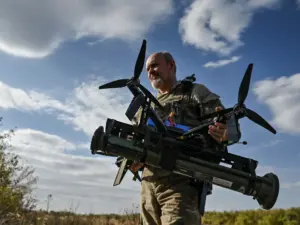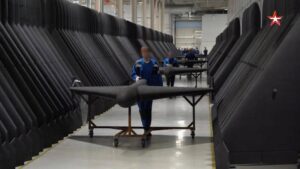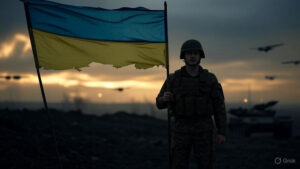There’s something deeply unsettling about the B-2 Spirit bomber—not just its capacity for destruction, but the way it embodies our peculiar relationship with technology and warfare. At $2 billion per aircraft, it’s the most expensive warplane ever built, a flying testament to both human ingenuity and our willingness to spend astronomical sums on the machinery of war.
The story begins in 1975, when the Cold War’s nuclear chess game had reached a particularly dangerous impasse. American B-52 bombers, those lumbering giants of the nuclear age, were becoming sitting ducks against increasingly sophisticated Soviet air defenses. As one Air Force general memorably put it, sending them into Soviet airspace would be like “throwing a rock at a hornet’s nest while wearing a bright red target on your chest.”
The solution lay buried in aviation history. Back in 1947, an eccentric engineer named Jack Northrop had built something called the YB-49—a massive jet-powered flying wing that looked like it had dropped from another planet. The military wasn’t impressed. These aircraft were deemed too unstable for practical use and, in a decision that must have crushed Northrop’s spirit, were ordered destroyed in 1949.
But sometimes the future circles back to vindicate the past. When the Air Force launched its Advanced Technology Bomber program in 1978, searching for an aircraft that could penetrate the world’s most heavily defended airspace undetected, they turned to Northrop Corporation. The flying wing concept, it turned out, was exactly what stealth technology needed—a shape that could confuse radar rather than boldly announce its presence.
What emerged was something that genuinely looked like science fiction made manifest. The B-2’s design is deceptively simple: essentially one continuous wing stretching 172 feet from tip to tip, with no conventional fuselage or tail. Every curve serves a purpose, creating what engineers call a minimal radar cross-section—a fancy way of saying it’s nearly invisible to enemy detection systems.
The real magic, though, happens at the surface level. The B-2’s skin is coated with classified radar-absorbent materials that soak up electromagnetic waves rather than bouncing them back. Think of it as an invisibility cloak made of materials so secret that their exact composition remains classified decades later. Even the construction had to be flawless—every panel precisely aligned, every seam minimized, because the slightest imperfection could transform a stealth bomber into a very expensive radar reflector.
This obsession with invisibility extends to every detail. The engines are buried deep within the aircraft’s body, their intakes hidden on top of the wing to avoid telltale radar signatures. The exhaust is cooled and spread over a wide area to minimize heat signatures. It’s an aircraft designed to tiptoe through the sky without leaving footprints.
But here’s where the engineering challenge becomes almost absurd: flying wings are inherently unstable. Without a tail, they want to pitch and yaw unpredictably—imagine trying to fly a paper airplane made of jello. The B-2 stays airborne only through constant computer intervention, with over 130 onboard computers making thousands of adjustments per second. It’s less piloted than negotiated with.
The capabilities are undeniably impressive. The B-2 can carry 20 tons of ordnance—everything from precision-guided conventional bombs to nuclear weapons that could, quite literally, alter the course of history. It can fly over 6,800 miles without refueling, meaning it can reach virtually any target on Earth. With aerial refueling, its range becomes effectively unlimited.
Yet the cost is staggering. At $2 billion per aircraft—more than the GDP of some small nations—only 21 B-2s were ever built. The price tag isn’t just about cutting-edge technology; it’s about exclusivity. When you’re producing something in such tiny quantities, each unit carries the entire weight of development costs. The radar-absorbing coating alone requires constant maintenance and reapplication, making each B-2 a multibillion-dollar maintenance project.
This raises uncomfortable questions about military spending and priorities. Supporters argue that the B-2’s unique capabilities—the ability to strike anywhere on Earth without detection—justify any cost. How do you put a price on that kind of strategic advantage? Critics point out that for the cost of the entire B-2 program, you could have built thousands of conventional aircraft or invested in entirely different approaches to national security.
What’s particularly striking is how the B-2 represents a peculiarly American approach to warfare: overwhelmingly sophisticated, breathtakingly expensive, and designed to project power anywhere on the globe. It’s the military equivalent of a luxury sports car that costs more than most people will earn in a lifetime—impressive, but raising questions about whether such extremes of engineering and expense actually make us safer.
The Air Force, recognizing that even the most advanced technology eventually becomes obsolete, is already developing the B-2’s successor: the B-21 Raider. Promised to be smaller, more affordable, and easier to maintain, it represents lessons learned from the B-2’s costly exclusivity. Whether it will actually prove more cost-effective remains to be seen—the military has a long history of promising cheaper alternatives that somehow end up costing just as much.
In the end, the B-2 Spirit stands as both an engineering marvel and a symbol of America’s complex relationship with military technology. It’s undeniably impressive—a machine that pushes the boundaries of what’s possible. But it also represents choices: to invest enormous resources in a small number of extraordinarily capable weapons rather than larger numbers of simpler ones, to prioritize technological superiority over cost-effectiveness, to build machines that can reach anywhere on Earth with devastating precision.
Whether that makes us safer or simply more capable of projecting power—and whether those are the same thing—remains the multibillion-dollar question that each generation of military planners must answer for themselves.


